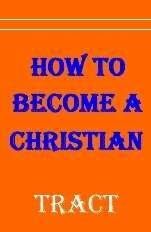Whose version of conversion?

D.W. Bebbington, in his book Evangelicalism in Modern Britain: A History from the 1730’s to the 1980s explains that the four marks of Evangelical Religion are: “1. Conversionism – the idea that lives need to be changed, 2. Activism – the expression of the gospel in effort, 3. Biblicism – a particular regard for the bible, and 4. Crucicentrism – a stress on the sacrifice of Christ on the cross.” (pp. 2-3) In this writing I will focus on the first mark – conversionism. There were a variety of doctrines associated with conversion including “justification by faith” – the concept that one cannot do enough in order to receive salvation, that faith alone merits salvation, and “assurance” – the concept that the individual is assured of his/her conversion. People looked for signs that an individual was converted. Evangelicalists like Jonathan Edwards insisted on the reality of hell as the place for the unconverted. “Backsliders,” those individuals who left the faith, were on the slippery slope to Lucifer’s lair. Conversions helped mark a clear line between the Christian and the pagan. Preachers used fear of hell as well as the forgiveness and love of God as stimulants for conversions. One man claimed he had been converted while he was preaching when he “felt light and joy come into his soul.” (p. 6) Also, the ideas of whether conversion is “gradual” or “sudden” was discussed. Some believed that it was a momentous passing through type of experience that one could not deny. Others believed it could be gradual and unconscious. (p. 8) Other important factors related to conversion including the Holy Spirit doing the conversion work in the individual, having a “will” to be saved, and the radical idea of “self-conversion” which caused nine students to be expelled from the Glasgow Congregational Theological Academy in 1844. The rite of baptism and its role in the conversion process became an issue when looking at infant baptism. When was a person “born again?” With the holiness movement the conversion process involved more than a “sinner’s prayer.” Sometimes it involved acts of assurance such as repentance, baptism, and speaking in tongues; as well as an adopted lifestyle change which included specific types of dress and adornment.
There are a variety of versions of conversions. What say you?
What are the signs of a “true conversion?”
When does an individual become “born again?”
Is it sudden or gradual?
What does your conversion look like?
Bebbington, D.W. Evangelicalism in Modern Britain: A History from the 1730’s to the 1980’s. New edition ed. N.p.: Routledge, 1989
Leave a Reply
You must be logged in to post a comment.